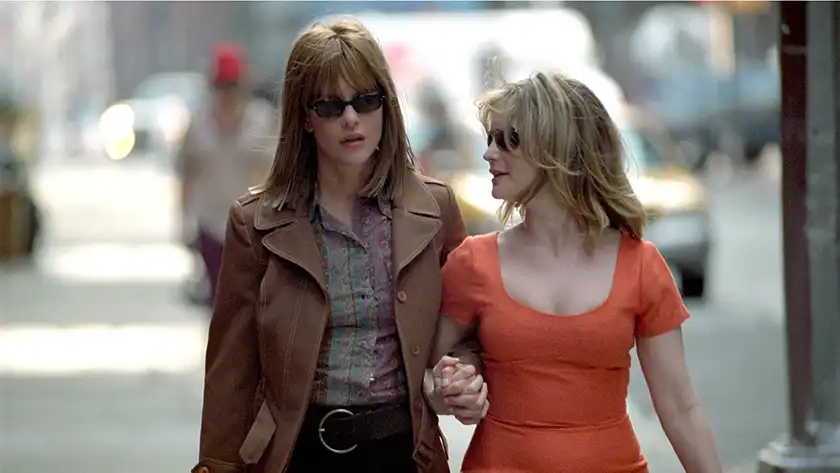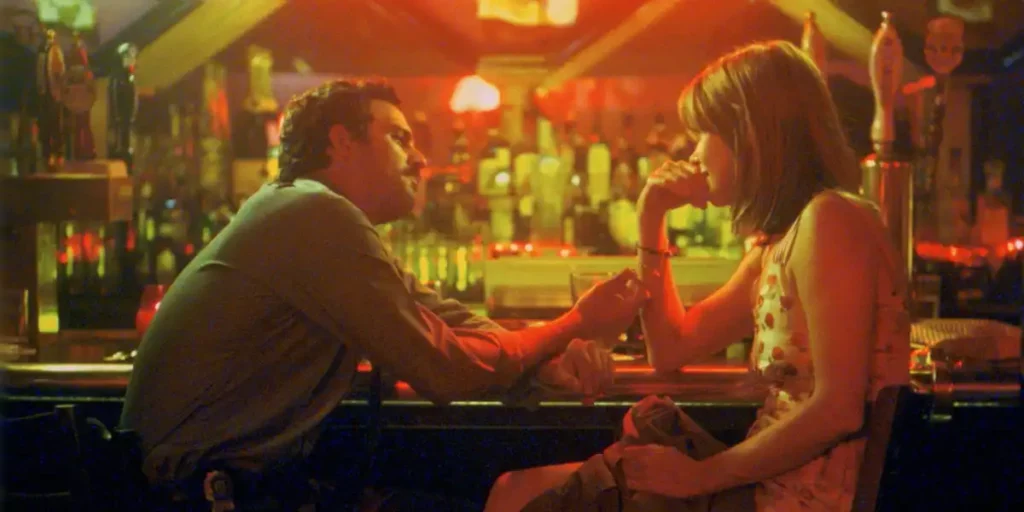Jane Campion’s most daring and misunderstood film In the Cut is a visually nuanced crime drama that emphasises the heroine’s inner, sensuous journey.
It is no exaggeration to say that In the Cut is Jane Campion’s most misunderstood and underrated film. Beneath what appears to be a fairly predictable crime drama hides an atmospheric, stylistically-intriguing, poetically imbued gem of a film with a vivid character journey, curious visual choices and sensitivity to the woman’s point of view.
Based on the novel of the same name by Susanna Moore, the film tells of high-school teacher Frannie Avery (Meg Ryan) who starts to suspect that the man she starts dating, streetwise, no-nonsense NYPD Detective Malloy (Mark Ruffalo), is the killer responsible for a series of gruesome murders of women in her neighbourhood.
It is evident from the very first scenes that Campion does not aim to make some action-oriented serial killer thriller that David Fincher or the Coen brothers would have shot. The Piano director’s interests clearly lie elsewhere. The poeticism of Campion’s moving image emerges with the opening sequence showing New York City at dawn as a storm of flower petals descends and Pauling (Jennifer Jason Leigh), Frannie’s half-sister, enjoys her morning coffee in a garden. Bitter-sweet song “Que Sera, Sera” accompanies her movements, hinting at the primacy of fate over human action, dreams and hopes. Then, we see Frannie, half-awake in her bed, glancing outside her window before again falling asleep and dreaming of snow. This is the kind of a film In the Cut is going to be: introspective, attuned to the main character’s inner world, capturing the smallest of nuances, while probing for meaning in everyday occurrences.
Passionate about words and poetry, Frannie goes through her day teaching, researching slang words, trying to maintain a strong bond with her sister Pauline and avoiding her persistent ex-boyfriend (Kevin Bacon). A gruesome murder took place near Frannie’s home, and when charismatic detective Malloy in charge of the investigation questions Frannie, he also arranges a date with her. She interests him both as a woman and as a witness since she was one of the last people to be at the same place as the victim – the Red Turtle café. Frannie saw a sexual encounter there between a man and a woman, and soon starts to suspect that not only she saw both the murderer and the victim, but the murderer may be Detective Malloy himself.
In any other director’s hands, In the Cut would have prioritised the action of pursuing the serial killer, the twists and turns of the case, and establishing a line of believable suspects. And, even though this film does all that to some extent, Campion is also too curious of a director not to explore some other unfamiliar terrains, and too sensitive to mood and details to simply focus on the ordinary aspects of a crime drama. Moore (also the scriptwriter) and Campion prioritise Frannie’s sexual re-awakening, and her spiritual trip to uncover the mysteries of herself, the man who starts to interests her, and their strange relationship. Deep down, Frannie instinctively realises that the murder case and her growing, forbidden passion for Detective Malloy are somehow connected and the key to solving the puzzle hides in plain sight. She will be right.
Thus, Frannie is constantly attuned to signs and symbols around her, which Campion captures with a striking poignancy, employing a range of camera movements and angles, letting some shots linger. Dion Beebe’s atmospheric, dream-like cinematography aids in this respects, accentuating certain colours over others, such as white and red (a lighthouse, roses, blood).
A poem Frannie reads on the subway is a symbol of a new cycle of passion beginning for her, and her glimpse of a young girl running away as she accompanies Detective Malloy in a police car is a subtle warning of a danger ahead. Fantasy, erotic desire, suspicion, fear, hope and trust all overlap. Just as in The Piano, an immensely vulnerable, sexually-repressed woman finds herself out of her depth in a foreign country, fragile Frannie also finds herself at sea, experiencing contradictory emotions related to Detective Malloy and the case he is investigating. Her instincts and feelings tell her one thing, but her mind and logic point to another.
One life anchor for Frannie is her half-sister Pauline, and In the Cut portrays a touching relationship between these two very different women. Here, Jennifer Jason Leigh’s natural charm and spontaneity do much to offset Ryan’s inner intensity. In comparison to dreamy Frannie, Pauline is action-oriented, and her latest pursuit of a married dentist ended in a stalking charge. The sisters’ point of connection is their girlish belief in romance and finding happiness with a perfect partner, and this is despite being surrounded by seemingly unreliable, unfaithful or unreachable men. In one scene, Pauline gifts Frannie a bracelet with charms, which becomes a symbol of their deep sisterly bond, later foreshadowing a loss.
Although Campion’s New York is a busy, vibrant and multi-cultural place, the director also underscores the loneliness of living in a big city, portraying the location riddled with danger and crime. Pauline lives in a cramped apartment just above a seedy striptease bar, and Malloy works in a crumbling building staffed with cynical workers. This location, as well the film’s underlying symbolism and Beebe’s shadowy colouring also make In the Cut one of the most notable film noirs of the 2000s.
Much has been made of Jane Campion’s sex scenes in In the Cut, but it is also clear that the director bravely champions the “female gaze” (as opposed to, or alongside, the “male gaze”) and the woman’s point of view in an affair. The director showcases the female erotic desire, which has long been sidelined and undervalued in cinema, through Frannie’s journey of sexual liberation. Frannie gazes almost lustfully at Malloy in some scenes, as Campion’s camera focuses predominantly on women’s bodies, their hands and feet.

The women (Frannie, Pauline) are the main characters in In the Cut, boldly exploring their sexuality and not afraid to pursue their attraction to the dark and mysterious. On the other hand, the men are almost secondary characters. Cornelius Webb (Sharrieff Pugh) is a pushy, but still subordinate student of Frannie, John Graham (Kevin Bacon) is a ridiculous jilted lover, Detective Rodriguez (Nick Damici), Malloy’s partner, is an obnoxious man recently demoted, and Malloy is, of course, an enticing love object. Malloy’s frankness helps Frannie to lower her inhibitions and find fulfilment in personal life. Their attraction is believable, their sexual act – sensuous.
Both Ryan and Ruffalo are intelligent, seasoned actors who appear to know intuitively what to do and understand fully Campion’s idiosyncratic vision. Ruffalo’s Malloy is an epitome of police hardheadness and self-assurance, whose mannerism (including gum-chewing) reminds much of Brando’s character from On the Waterfront, with whom Malloy also happens to share a surname. Ryan is also surprisingly good for someone who previously spent her whole career on light romantic comedy sets.
“It’s off in the distance. It came into the room. It’s here in the circle”, reads one slogan in the film, and by the end, Frannie came full circle, now finally seeing clearly all the explanations behind the suspicious-to-her signs. Her symbolic, spiritual journey is finally complete. Even if In the Cut does not hit all the right spots in terms of a murder investigation story (for example, its suspect list is too obvious), there is still plenty of compensation. Campion paired a crime story with her heroine’s transformative, erotically-charged journey of self-discovery, and the result is a luscious drama of much emotional insight, greatly underappreciated.
In the Cut is now available to watch on digital and on demand. Explore the rest of Jane Campion’s filmography with our reviews of The Power of the Dog, The Piano, and Bright Star.

